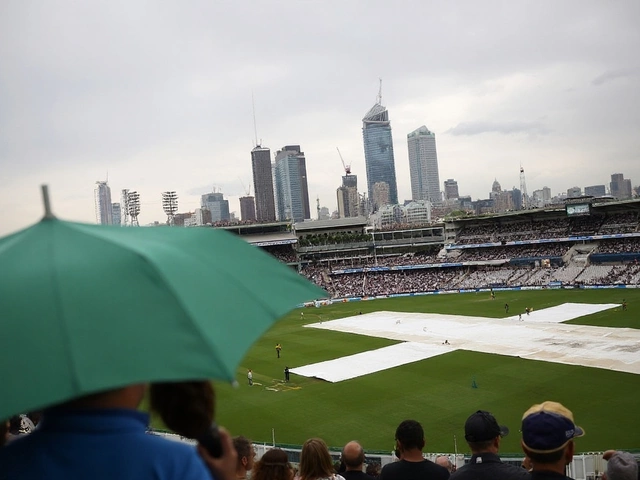Waterlogging: What It Is and How to Deal With It
When the ground stays soaked and streets turn into small rivers, you’re dealing with waterlogging. It’s a common problem during the monsoon, especially in low‑lying areas or places with poor drainage. Knowing why it happens and what you can do right now makes a big difference for your home and daily travel.
Common Causes of Waterlogging
First, heavy rain overwhelms the natural and artificial drains. If rain falls faster than water can flow away, it pools on roads, fields, and even inside houses. Second, blocked drains—filled with sand, garbage, or leaves—slow down the flow and cause backups. Third, flat terrain or a high water table prevents water from soaking down quickly. Lastly, construction work that changes the landscape can redirect water to places where it didn’t belong before.
Practical Steps to Prevent and Manage Waterlogging
Start with a quick clean‑up of your local drains. Throw away any debris, sand, or plastic that blocks the flow. If you live in a house with a basement, consider installing a sump pump or a simple French drain to move water away from the foundation.
Raise the floor level of rooms that are prone to flooding. Adding a thin layer of sand or using waterproof mats can keep your furniture dry during a short spell of waterlogging. Keep a bucket and mop handy so you can quickly wipe up any water that sneaks in.
Stay aware of weather alerts. The India Meteorological Department (IMD) often issues orange or red alerts before heavy rain. When you see an alert, plan alternate routes, avoid low‑lying roads, and postpone outdoor work if possible.
During a waterlogged situation, avoid driving through standing water deeper than a few centimeters. Even shallow water can hide potholes or cause your vehicle to stall. If you must cross, go slowly and keep the engine running to prevent it from stalling.
Long‑term community solutions matter too. Encourage your neighborhood to adopt regular drain cleaning schedules. Simple rain gardens—shallow pits filled with gravel and plants—help absorb excess water and reduce runoff.
Keep an eye on your home’s roof and gutters. Clogged gutters push rainwater onto the walls, increasing the risk of water entering the house. A quick sweep of leaves and twigs each week can prevent that problem.
Finally, track water levels in your area. Many local councils publish real‑time flood maps online. Knowing the exact level helps you decide whether it’s safe to leave the house or if you need to move valuables to higher ground.
Waterlogging can be frustrating, but with a few practical steps you can protect your home and stay safe on the roads. Check our site regularly for the latest rain alerts, DIY drainage guides, and community updates to stay ahead of the next downpour.
Kolkata rain: Depression drenches city, waterlogging and traffic snarls return with the monsoon
A weather depression over the Bay of Bengal has intensified monsoon showers in Kolkata, causing waterlogging in low-lying pockets and long traffic delays. The IMD expects intermittent heavy rain and gusty winds into early September. Civic teams ran pumps and cleared drains, but high tide and back-to-back showers slowed drainage. Commuters faced detours, slower public transport, and longer travel times.





